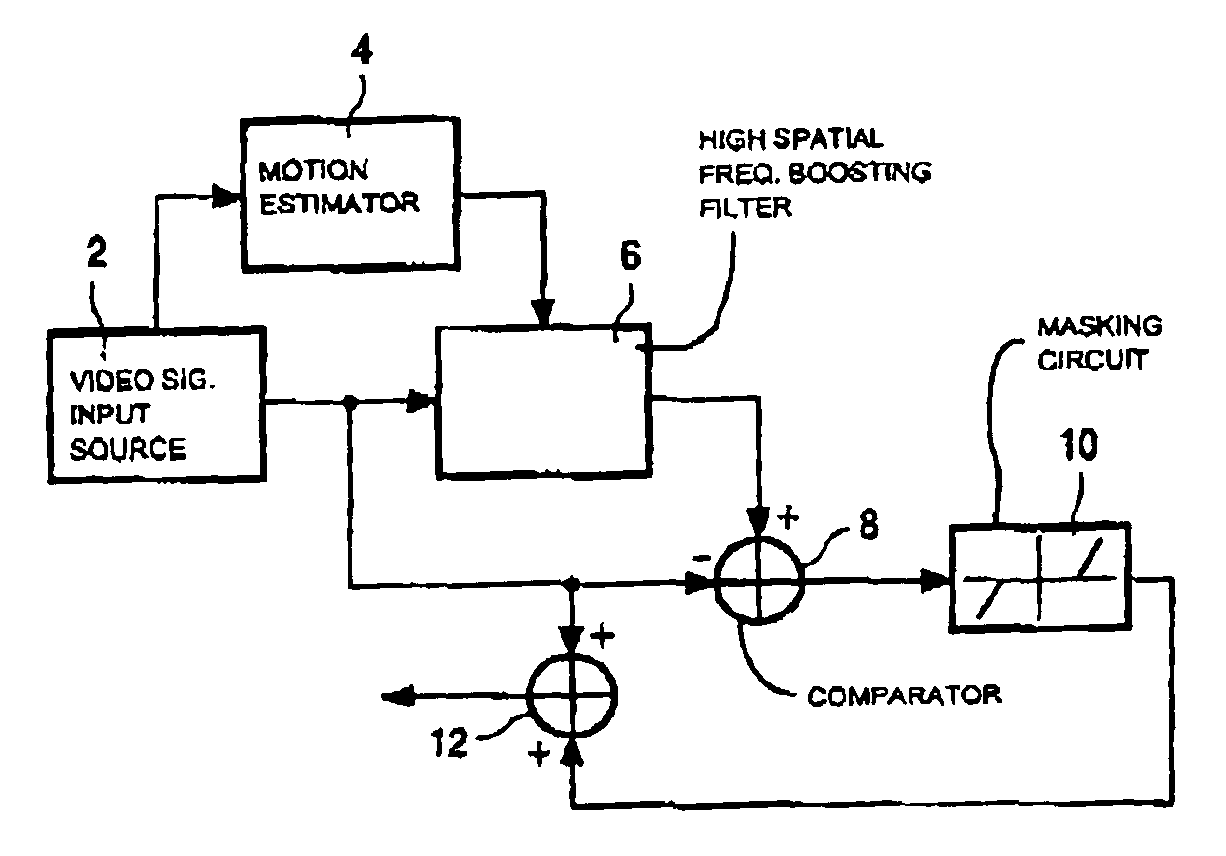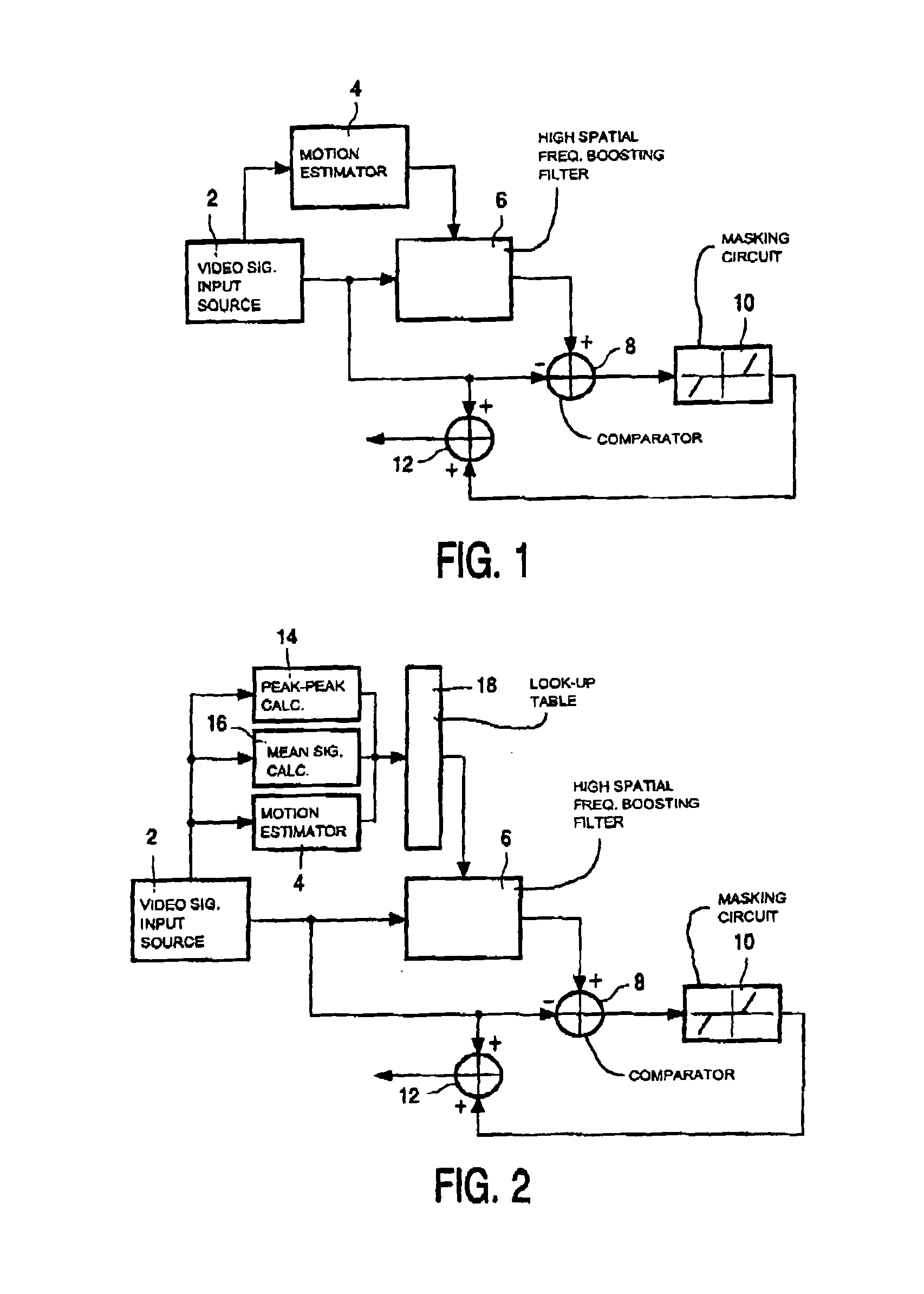Anti motion blur display
a technology of motion blur and display screen, applied in the field of anti motion blur display, can solve the problems of unfavorable dynamic behavior of display screen, noise modulation, and inability to improve significant detail of filtering, and achieve the effect of reducing noise modulation, reducing noise, and improving picture quality
- Summary
- Abstract
- Description
- Claims
- Application Information
AI Technical Summary
Benefits of technology
Problems solved by technology
Method used
Image
Examples
Embodiment Construction
[0018]In cathode ray tubes, each pixel of a displayed image is generated as a pulse, which is very short compared to the picture time. Different to cathode ray tubes, in new flat, high quality, low cost displays devices, each pixel is displayed during most of the picture time. In case any part of the picture contains motion, the viewer will track this motion. As each pixel is displayed substantially the whole picture time, the intensity of pixels showing the motion is integrated along the motion trajectory as follows: Fout(x→,n)=1ti∫0tiF(x→+tTD→,n) ⅆt(1)
where ti is the display time, F is the input video signal, Fout is the output video signal, and T is the picture period. The vector D is the product of the object velocity and the picture period. In case ti is constant, the integration is the same as a convolution of F(x,n) and a sample-and-hold function h(x): Fout(x→,n)=Tti∫0tiTF(x→+α D→,n) ⅆα=∫-∞∞F(x→+α D→,n)h1(α D→) ⅆα=F(x→,n)*h(x→)(2)
where h(x) is: h...
PUM
 Login to View More
Login to View More Abstract
Description
Claims
Application Information
 Login to View More
Login to View More - R&D
- Intellectual Property
- Life Sciences
- Materials
- Tech Scout
- Unparalleled Data Quality
- Higher Quality Content
- 60% Fewer Hallucinations
Browse by: Latest US Patents, China's latest patents, Technical Efficacy Thesaurus, Application Domain, Technology Topic, Popular Technical Reports.
© 2025 PatSnap. All rights reserved.Legal|Privacy policy|Modern Slavery Act Transparency Statement|Sitemap|About US| Contact US: help@patsnap.com



